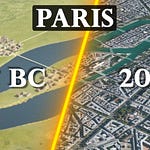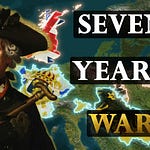If you were asked to pick out France on a map, you would most likely choose this area in Europe, bounded by the waters of the Atlantic Ocean, the English Channel, and the Mediterranean Sea, as well as the land borders shared with Belgium, Luxembourg, Germany, Switzerland, Italy, Spain, and Andorra. You would also be right to point out the island of Corsica; however, this is not the only part of France that is separated from the mainland, for the nation’s territory actually extends far beyond the confines of continental Europe.
From the far-flung tropics of the Pacific, to the dense rainforests of South America and the storm-battered coasts of Canada, there are thirteen islands and territories scattered across the globe that are collectively referred to as France d'outre-mer (or Overseas France). With a combined population of over 2.8 million people, these are the last imperial vestiges of France’s once mighty colonial empire. In a period of little over 400 years, the zeal and daring of French explorers allowed the nation to exert its control and influence across many regions of the world, stretching from the Rocky Mountains all the way to Tahiti. But how did this empire, which at multiple times in history stood as the second largest in the world, become reduced to only a handful of sparsely populated and isolated territories? This is the history of the French Empire.
The French colonial empire comprised the overseas colonies, protectorates, and mandate territories that came under French rule from the 16th century onward. A distinction is generally made between the "First French colonial empire", that existed until 1814, by which time most of it had been lost or sold, and the "Second French colonial empire", which began with the conquest of Algiers in 1830. On the eve of World War I, France's colonial empire was the second largest in the world after the British Empire. France began to establish colonies in the Americas, the Caribbean, and India in the 16th century but lost most of its possessions following its defeat in the Seven Years' War. The North American possessions were lost to Britain and Spain, but Spain later returned Louisiana to France in 1800. The territory was then sold to the United States in 1803.
France rebuilt a new empire mostly after 1850, concentrating chiefly in Africa as well as Indochina and the South Pacific. As it developed, the new French empire took on roles of trade with the metropole, supplying raw materials and purchasing manufactured items. Especially after the disastrous Franco-Prussian War, which saw Germany become the leading economic and military power of Continental Europe, acquiring colonies and rebuilding an empire was seen as a way to restore French prestige in the world. It was also to provide manpower during the world wars. A major goal was the Mission civilisatrice or "Civilizing Mission". France sent small numbers of settlers to its empire, with the notable exception of Algeria, where the French settlers took power while being a minority. In World War II, Charles de Gaulle and the Free French took control of the overseas colonies one-by-one and used them as bases from which they prepared to liberate France. Historian Tony Chafer argues: "In an effort to restore its world-power status after the humiliation of defeat and occupation, France was eager to maintain its overseas empire at the end of the Second World War."
However, after 1945 anti-colonial movements began to challenge European authority. Major revolts in Indochina and Algeria proved very expensive and France lost both colonies. After these conflicts, a relatively peaceful decolonization took place elsewhere after 1960. The French Constitution of 27 October 1946 (Fourth French Republic) established the French Union, which endured until 1958. Newer remnants of the colonial empire were integrated into France as overseas departments and territories within the French Republic. These now total altogether 119,394 km2 (46,098 sq. miles), with 2.8 million people in 2021. Links between France and its former colonies persist through La francophonie, the CFA franc, and joint military operations such as Operation Serval.













Share this post